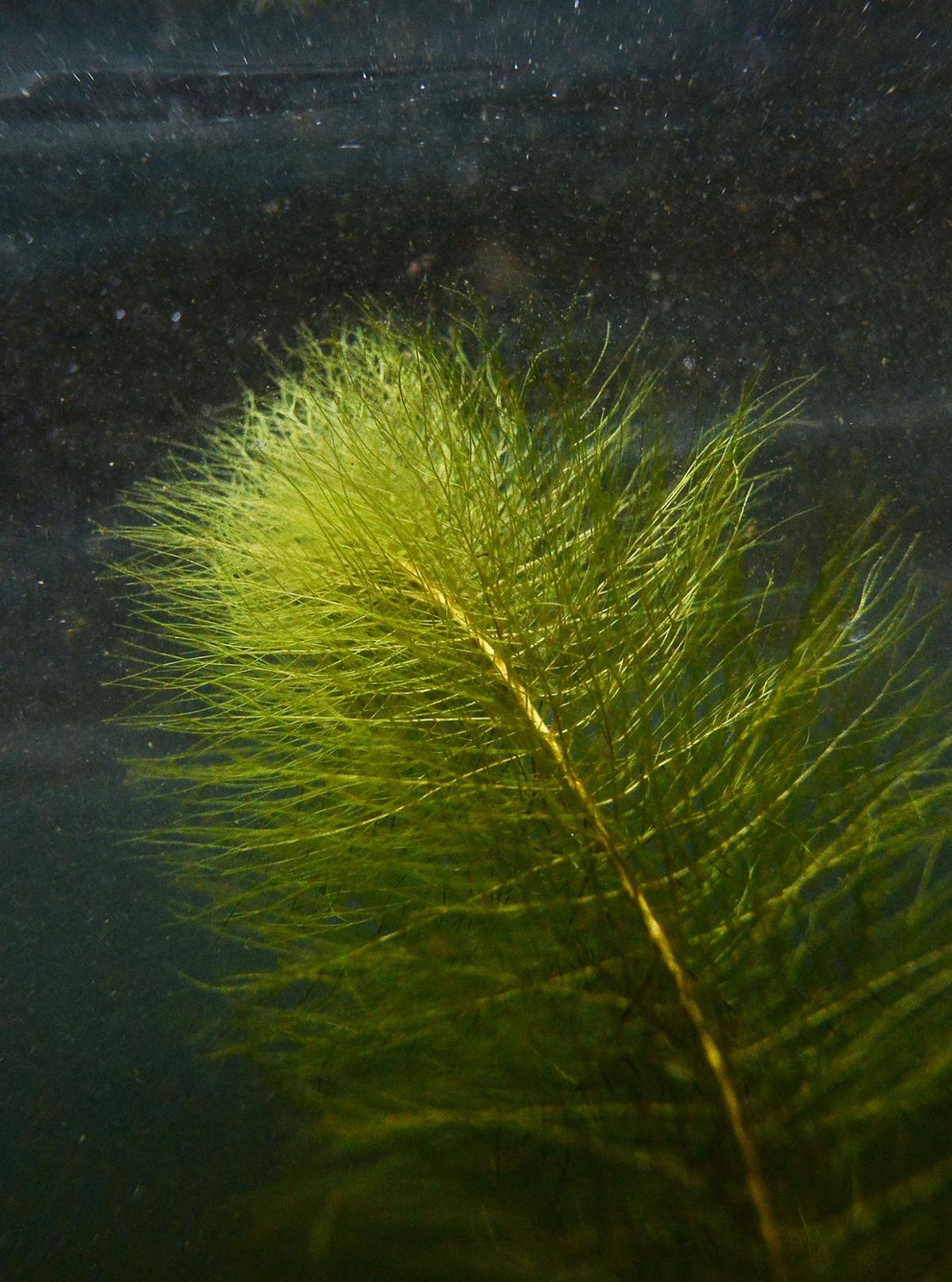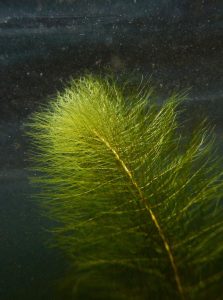
Lake Protection Group Targets Milfoil
This article was originally published by Thomas Caldwell on June 19, 2019, in the Laconia Daily Sun.

Controlling milfoil in New Hampshire waters has been a concern since it first appeared here in the 1960s, but the methods of dealing with the invasive plant have become more sophisticated as scientists have learned more about its life cycle.
Milfoil management has become so complex that residents and businesses around Paugus Bay in Laconia decided there should be a coordinated approach, and they formed the nonprofit Greater Paugus Bay Watershed Association to better deal with it.
The association’s mission is to “preserve, protect, and in some cases restore the parts of Lake Winnipesaukee that reside in Laconia,” and managing invasive plants is part of its mission. Erosion control and long-term management are other areas of focus.
The inlet at Paugus Bay feeds Laconia’s water supply, so proper handling of the herbicides used to treat milfoil is especially important, and of concern to city officials. When the state initially proposed treating the entire bay, the city’s conservation commission voiced opposition.
“We said, ‘You can’t do that; it’s our drinking water,” said Dean Anson, the chair of the conservation commission which formed a milfoil subcommittee about eight years ago.
Until now, treating milfoil has largely been through individual efforts. Those with lakeside properties came up with the money to treat their coves and shallows, with the city providing some funding, and the state providing some reimbursement through the Department of Environmental Services.
Those efforts have helped keep milfoil in check and the bay is in better shape than it used to be — but ongoing treatment is necessary.
In recent years, the state has developed long-term milfoil management plans, geared to the specific conditions of each area. This past March, Amy Smagula, the DES’ milfoil manager, issued a report with recommendations for Paugus Bay.
The Plant

There actually are several forms of milfoil, with six species of the plant causing no major problems. It is the variable milfoil that causes concern because it can take over a body of water, displacing native plants and causing problems for swimmers and boaters. Because it is not a native plant, there are no natural predators to keep it in check, and it now resides in 75 bodies of water in New Hampshire.
Paugus Bay, because of its depth, supports milfoil only in the shallow areas and coves. Milfoil requires sunlight to grow, and the bay is too deep for it to establish itself in the deeper portions.
It also does not grow in high-traffic areas, such as around marinas. Yet Paul Goodwin, owner of Watermark Marine Systems, said that, just 100 yards out, thick milfoil areas have become a real problem. That is why he joined Paugus Bay residents Rich Tilton and David Parker, along with Ryan Cardella of East Coast Flightcraft of Weirs Beach, in establishing the Greater Paugus Bay Watershed Association, which gained nonprofit status last fall.
A recent study by the Department of Environmental Services showed that milfoil has a high seed production rate and the seeds are resistant to herbicides, making it more difficult to control the weed by chemical and biological means alone. The most effective way to get rid of milfoil is by hand-pulling the plants — a tedious and expensive process.
Removal Process
Successful treatment generally requires a combination of hand-pulling, diver-assisted suction harvesting (DASH), placement of benthic barriers (mats or blankets that cover the bottom of a body of water to prevent weed growth), and herbicides.
The goal is management, not eradication, said Goodwin, explaining that, because the plant breaks into segments, it is virtually impossible to totally rid a water body of the species once it has established itself.
SOLitude Lake Management, which is the only company certified for local herbicide treatment, did an initial treatment of Moulton Cove, Pickerel Cove, and the outside of Langley Cove last year, at a cost of more than $35,000. DASH followups in July and October cost another $22,000, for a total cost exceeding $57,000.

For 2019, the Greater Paugus Bay Watershed Association is looking to do up to 20 days of diver-assisted suction harvesting, at a budgeted figure of $19,600, and herbicide treatment for $27,600. Including administrative fees, the group is projecting a cost of $38,874.
The city of Laconia has $30,000 to spend, and the DES may provide a $10,000 grant, but the remainder of the cost will come through a combination of fundraising and appeals.
Tilton said they are reaching out to local businesses and property owners for contributions, and are planning to hold a comedy night at The Margate on Aug. 29 to help raise money for the project.
Volunteer Effort
Tilton said the Greater Paugus Bay Watershed Association relies 100 percent on volunteers, similar to the Lake Host program that has volunteers taking water samples and setting up at public boat launches around the state to check boats for invasive species and teach the importance of washing boats and trailers when going from one water body to another.
“Awareness is the big part,” Tilton said, and right now the Paugus Bay group is trying to raise awareness of its own work. “This has to be a priority,” he said.
He pointed out that the more effective they are in controlling milfoil on Paugus Bay, the less problems there will be downstream.
The association hopes to establish annual donations that can go toward ongoing efforts to protect the bay.
If the group is unable to cover the shortfall in funding, the treatment plan may be amended, according to Laconia Planning Director Dean Trefethen.
Other Options
The city has leftover money from last year which has been encumbered, and Trefethen said that money would be applied to this year’s milfoil treatment first. The coming year’s budget for Laconia has not yet been approved, but the City Council has indicated that the $30,000 appropriation for lake treatment will not be an issue.
There is one hitch, however: The city’s appropriation is not just for Paugus Bay. The money will be shared with other areas where milfoil is a problem. Trefethen said most of the money will go to Paugus, but some also will be allocated for Lake Winnisquam.
In the past, the city also has targeted treatment for Lake Opechee.
The city’s contribution has been relatively constant, but because there are more locations around the state requiring treatment, and New Hampshire’s overall milfoil budget has not increased, Laconia gets a little less in state funding each year.
“Altogether, it’s nowhere near enough money to treat all the areas that have milfoil in the three lakes,” Trefethen said, “so we’re trying to treat the most problematic areas with the available resources. That’s why the fundraising by the Paugus Bay Association is so very important.”